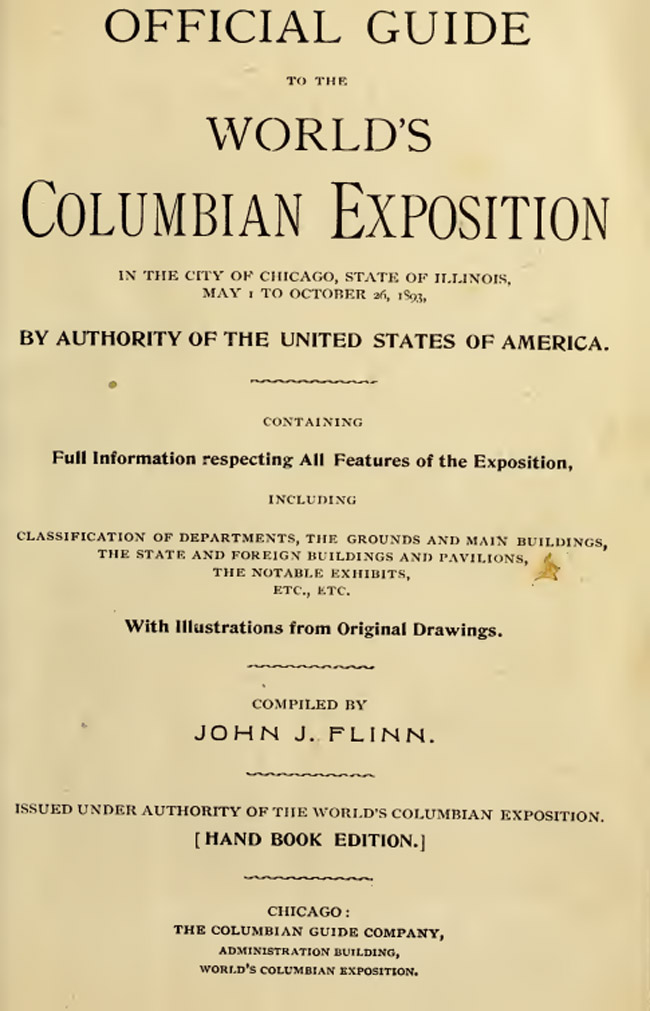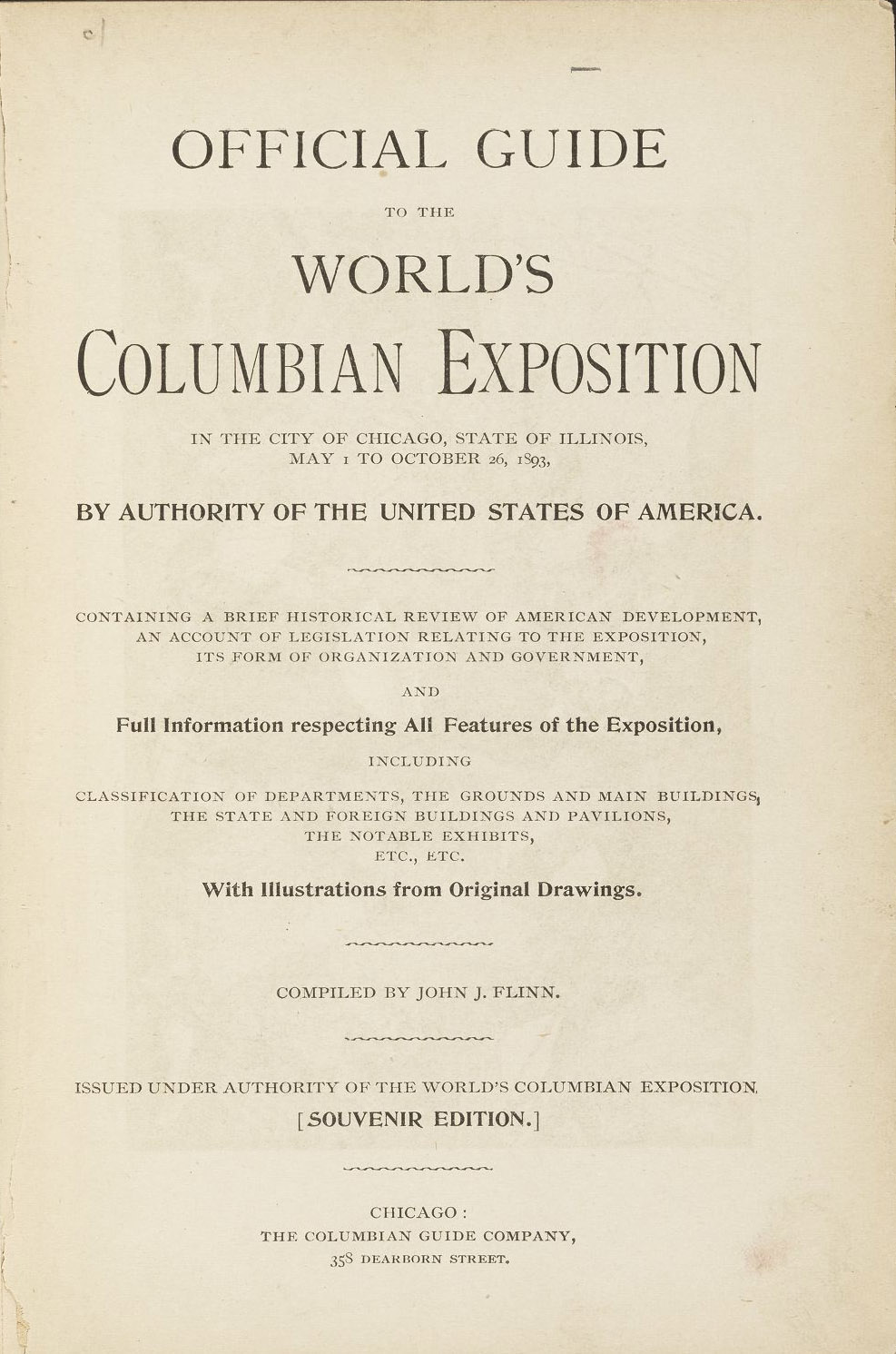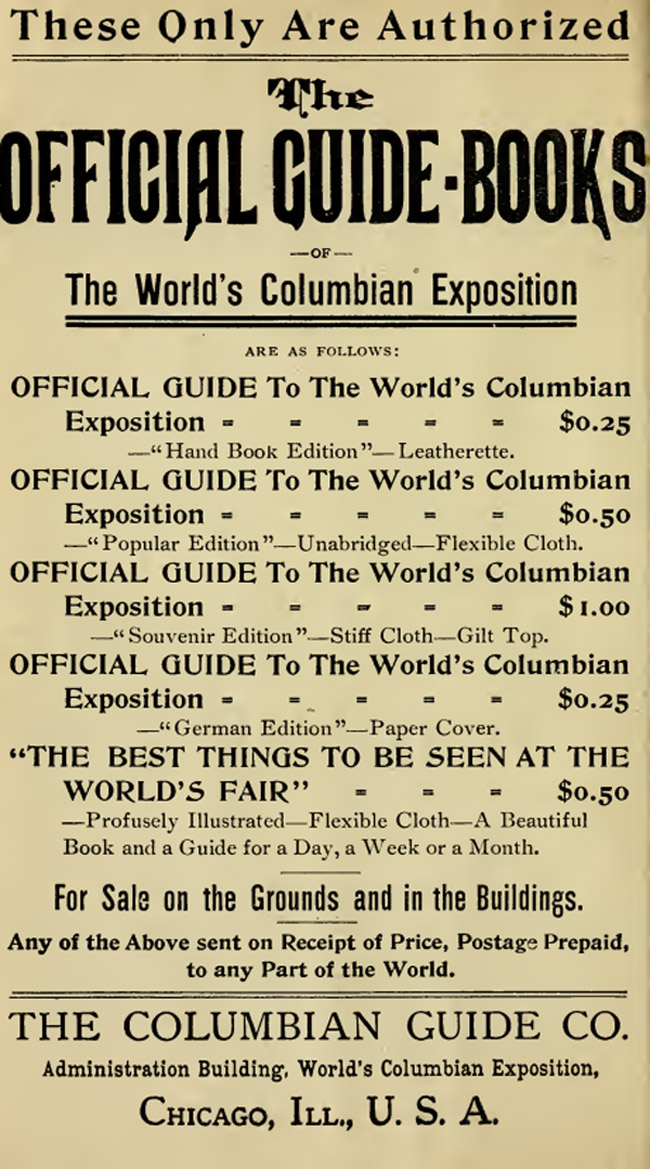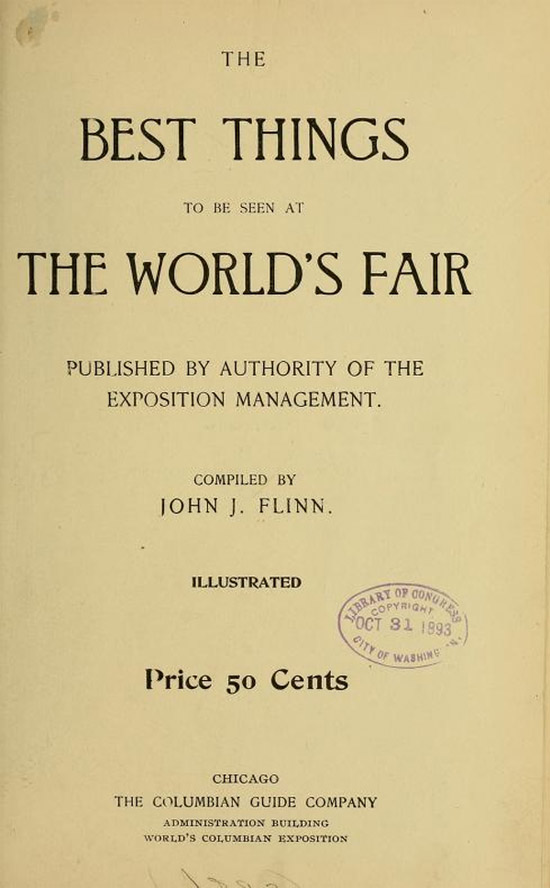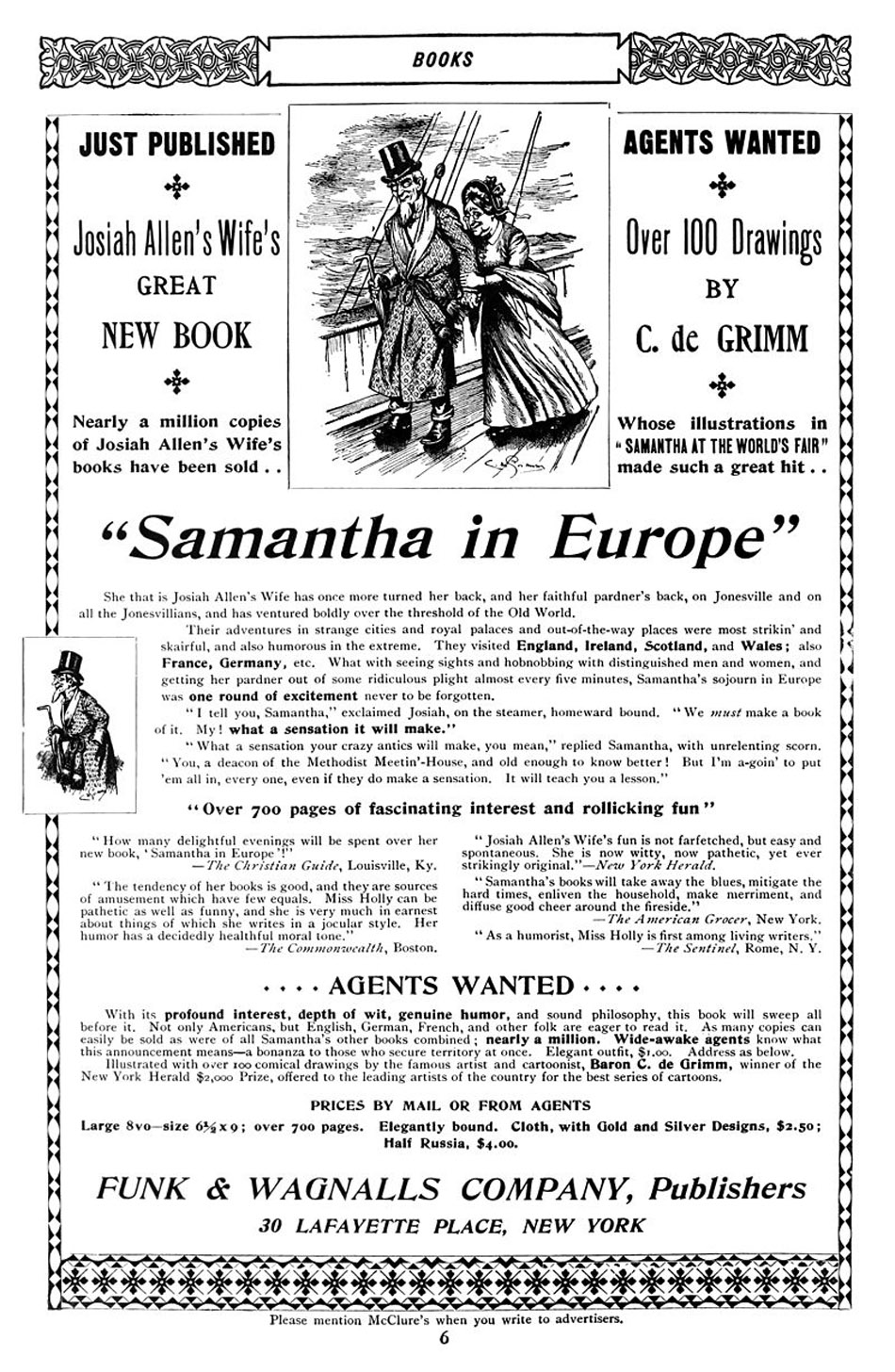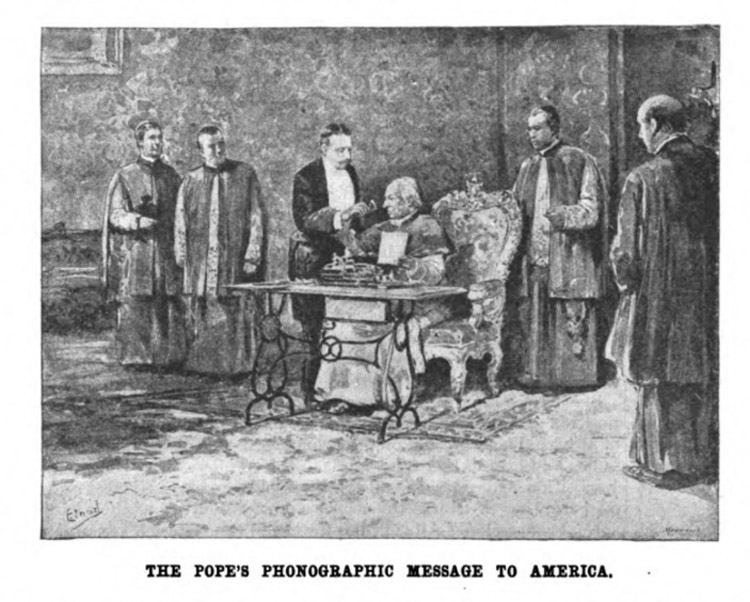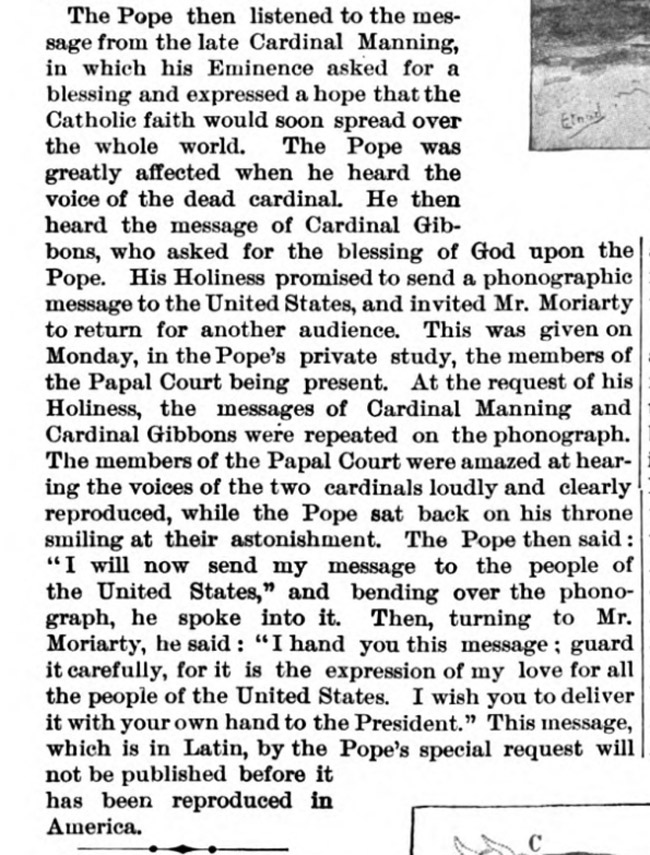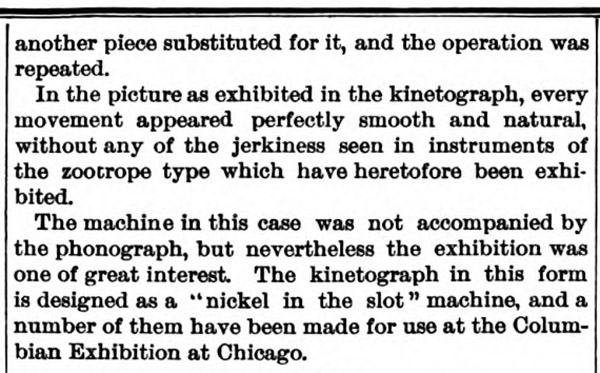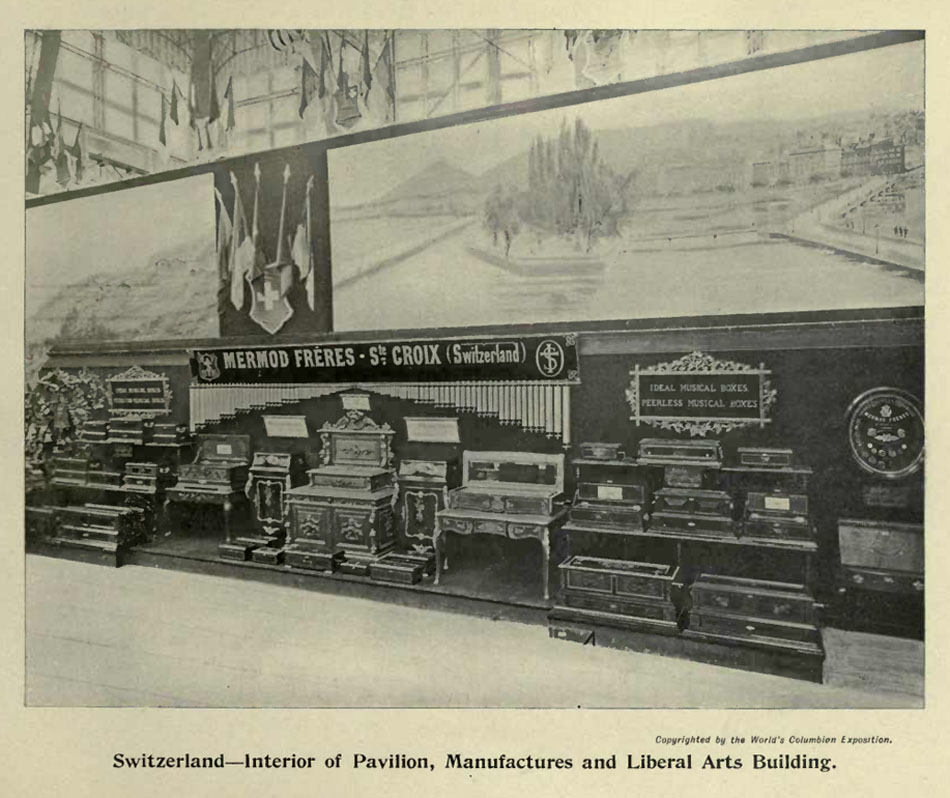The World's Columbian
Exposition of 1893 and the Phonograph
References, Annotations and Endnotes
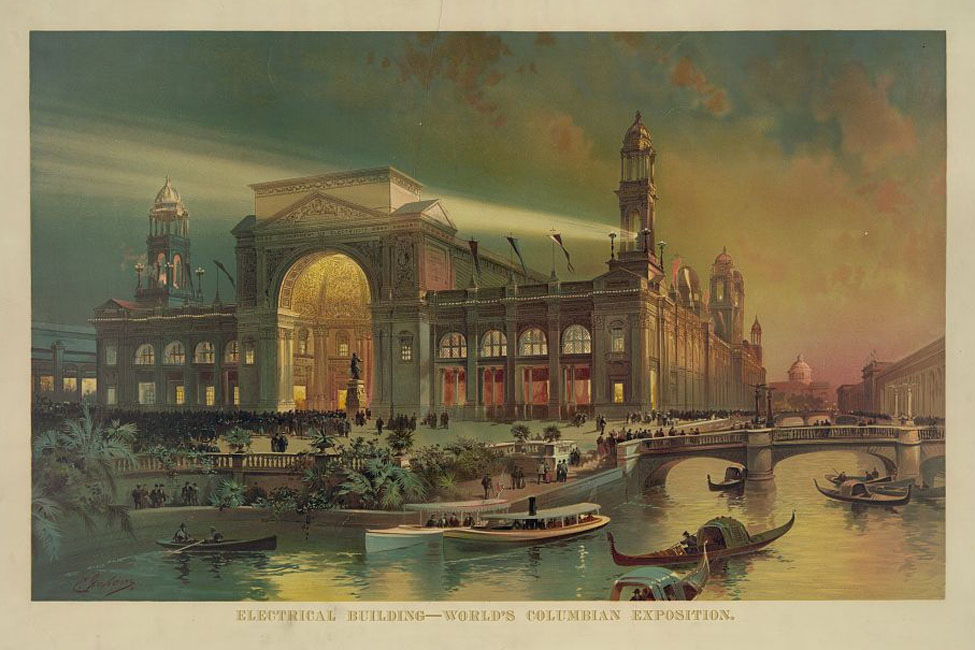
The Electricity Building of the 1893
World's Columbian Exposition
"Official Guide
to the World's Columbian Exposition" compiled by John J. Flinn,
Hand Book Edition, ©1893 by the World's Columbian Exposition
Edison's Exhibits
Edison had other exhibits at the fair
besides his phonographs such as Edison's dynamos, electric domestic
appliances, and his famous quadruplex. Edison was granted a concession
from the fair for one hundred and fifty Kinetographs
(i.e., Kinetoscopes).
Dynamos were installed
by Edison as one of the companies to provide arc lighting and power
for the fair.
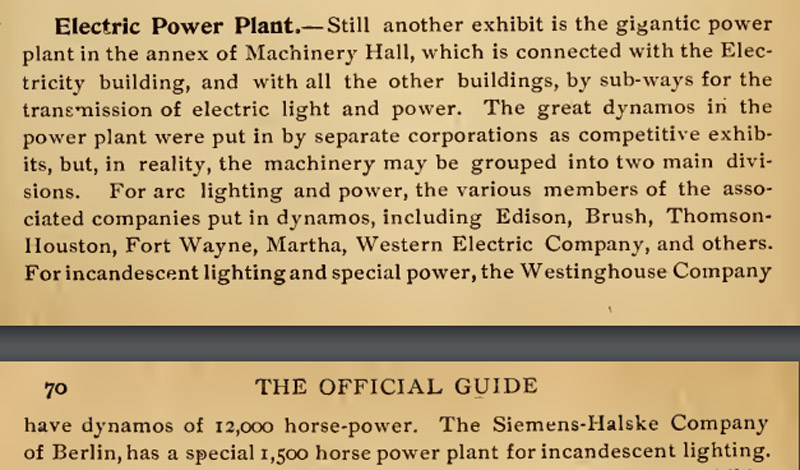
Official Guide to
the World's Columbian Exposition, p. 70
Applicances, such
as those in the kitchen of the Electric House in in the Electricity
Building included those made by The Edison company.

Official Guide to
the World's Columbian Exposition, p. 70
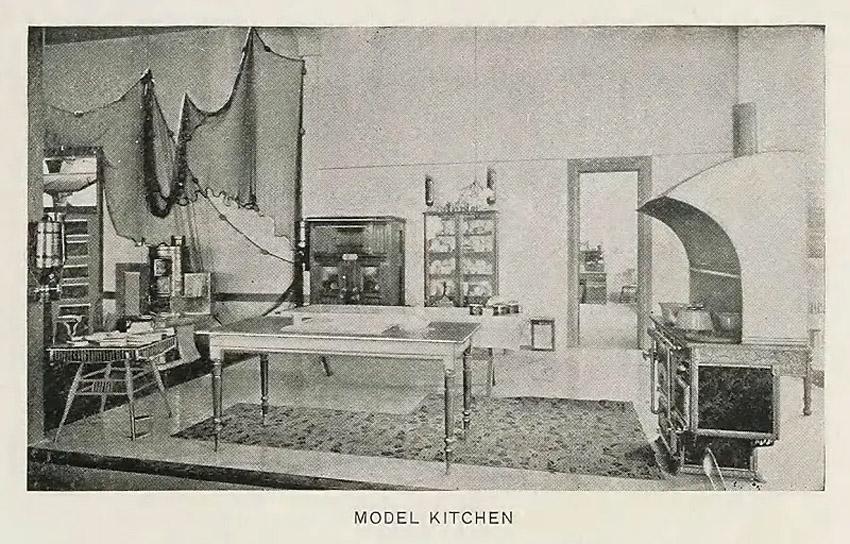
The model kitchen powered
by electricity. (Image from Bancroft, Hubert Howe The Book of
the Fair. The Bancroft Company, 1893.) (1)
Edison's quadruplex
mechanism was on display in the Electricity Buildings exhibit
of telegraph and telephone service.

Official Guide to the World's Columbian
Exposition, p. 70.
Edison's Phonograph
was on display in The Electricity Building.

Official Guide to
the World's Columbian Exposition, p. 71
Edison's kimetograph
(sic) (kinetoscope) was intended to be on display.

Official Guide to
the World's Columbian Exposition, p. 71

The Inter Ocean
Illustrated Supplement by Arthur Young, October 11, 1893
The
Phonograph for Business
Typewriters were promoted as labor-savings
machines and a modern partner with the Phonograph
Typewriters became more closely associated
with the phonograph as the phonograph industry promoted itself as
an essential part of the modern business office. The phonograph
for dictation was seen as the new business standard for composing
a letter to be then transcribed by the secretary listening to the
phonograph and typing the letter. Typewriter ads in the early 1890's
regularly appeared in the official trade magazine of the phonograph,
The Phonogram.
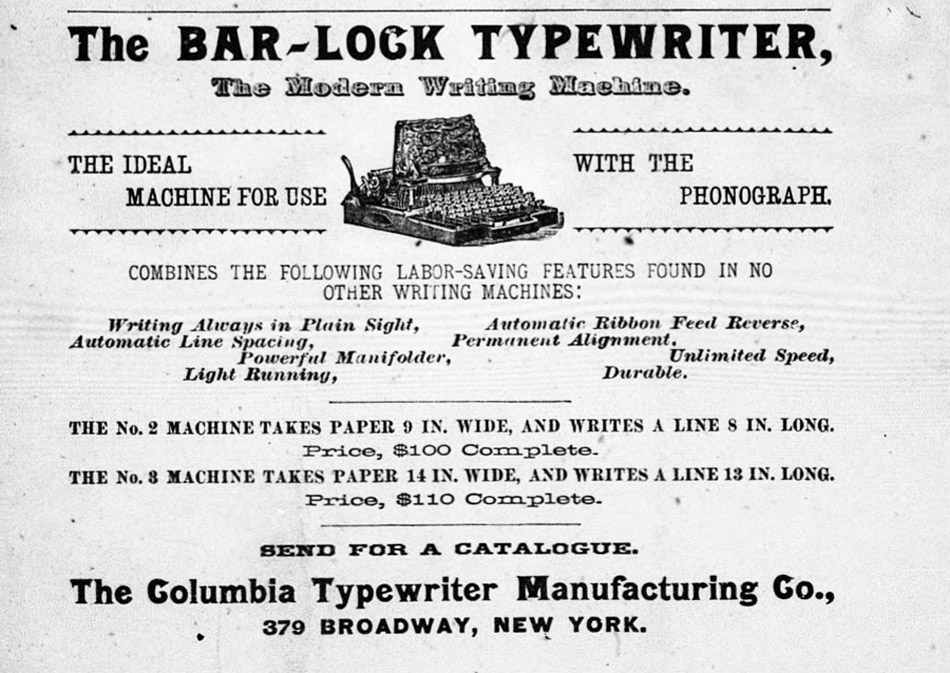
The Phonogram, November-December
1891

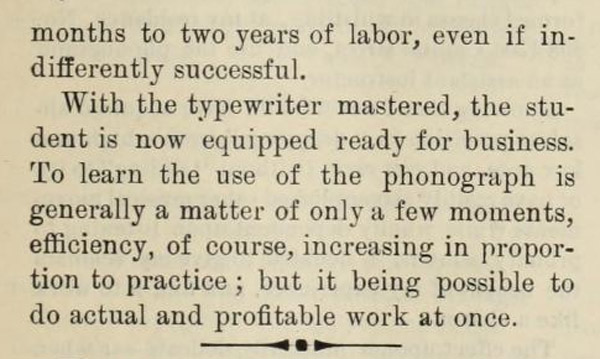
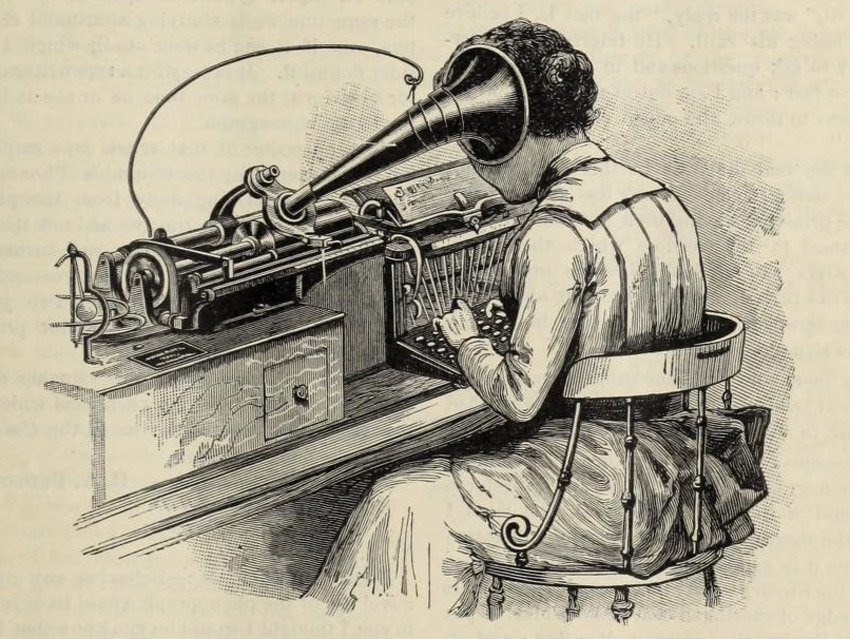
The Phonogram, April-May 1892
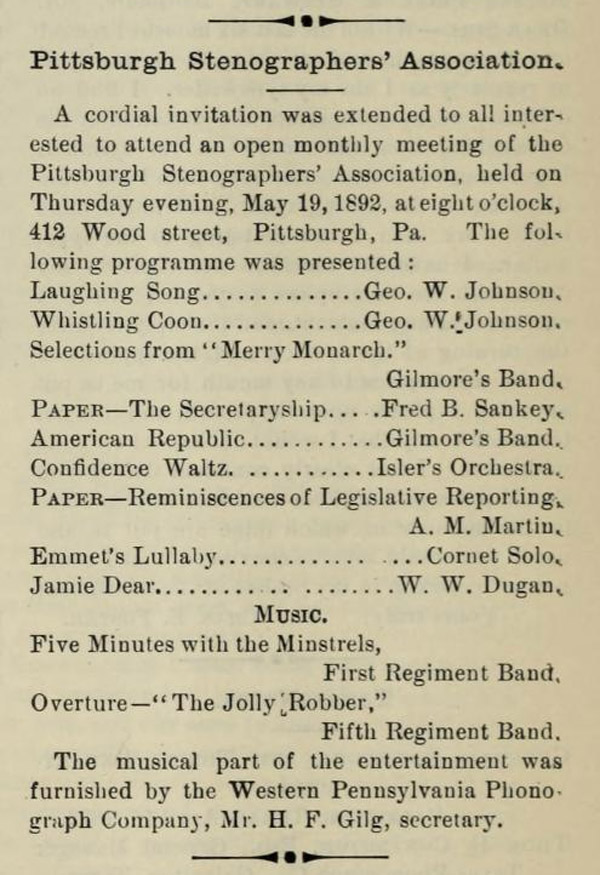
The Phonogram,
April-May 1892
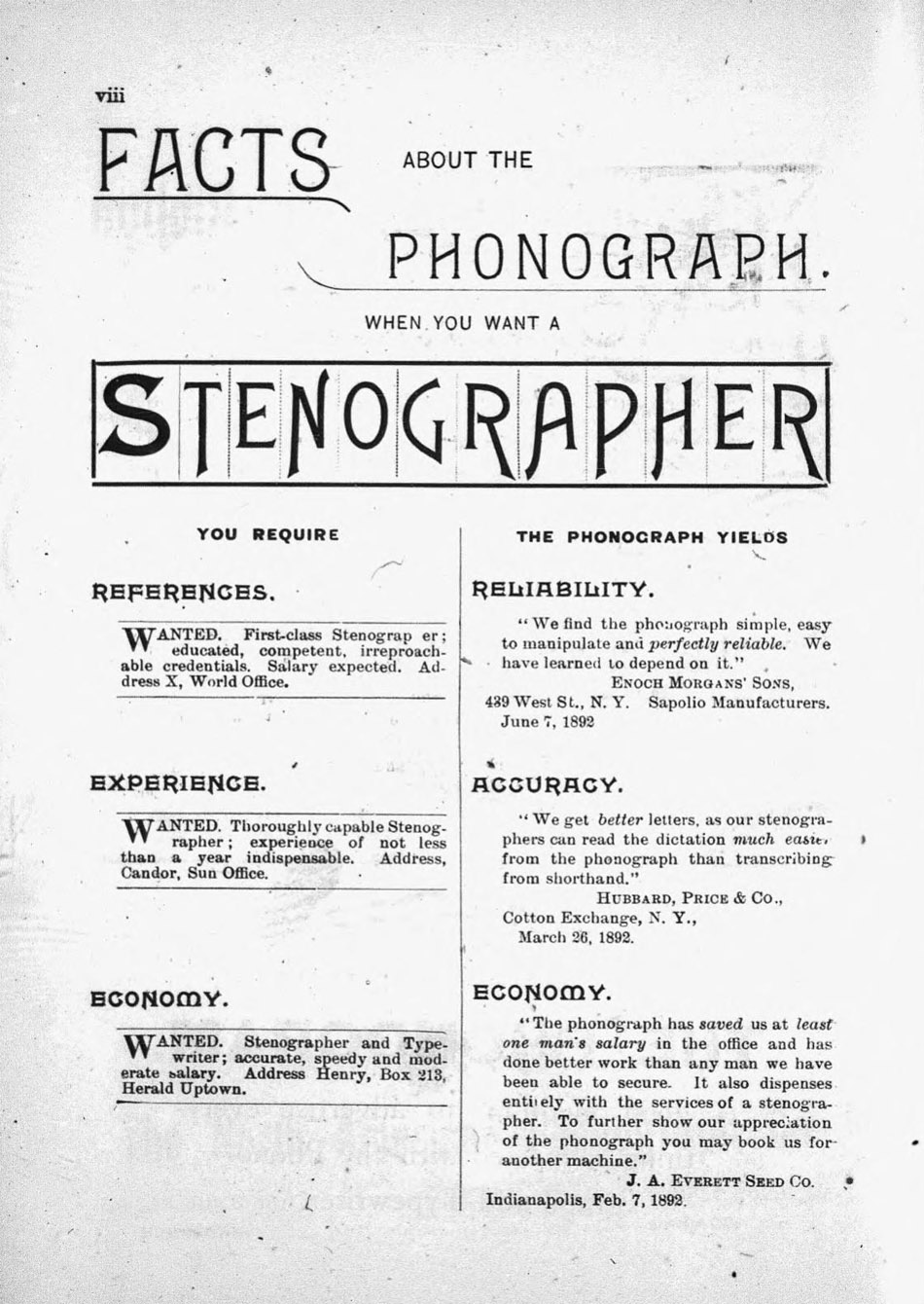
The Phonogram,
February 1893
A controversy occurred
at the Exposition in August as it was reported that "a phonograph
firm" advertised it is using the Smith-Premier typewriting
machine. Remington responded by withdrawing many of their machines
for use at the exposition.

The Daily Inter
Ocean, Chicago, August 17, 1893
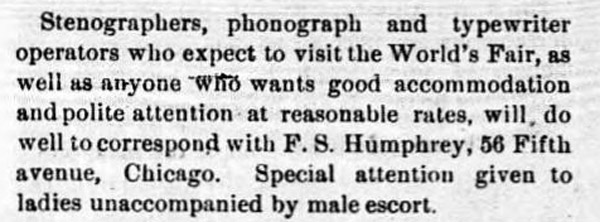
The Phonogram,
February 1893, p. 341
Programs and demonstrations
Programs and demonstrations of the
phonograph were important ways for the talking machine industry
to promote the value and versatility of the phonograph as an entertainer,
an educator, and a commercial machine for business letters. The
following is how the Chicago Tribune reported one of these
events.
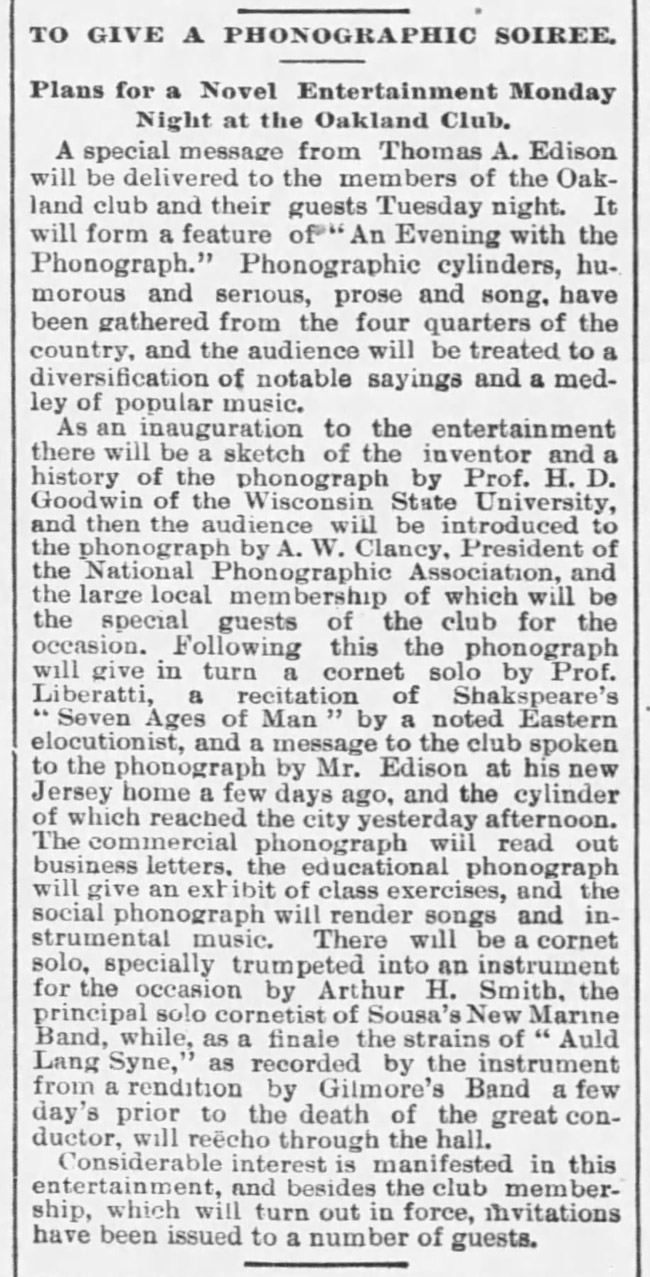
The Chicago Tribune, Chicago,
January 22, 1893, p.12
National Phonographic
Association Members visit the phonograph exhibit in the Electricity
Building
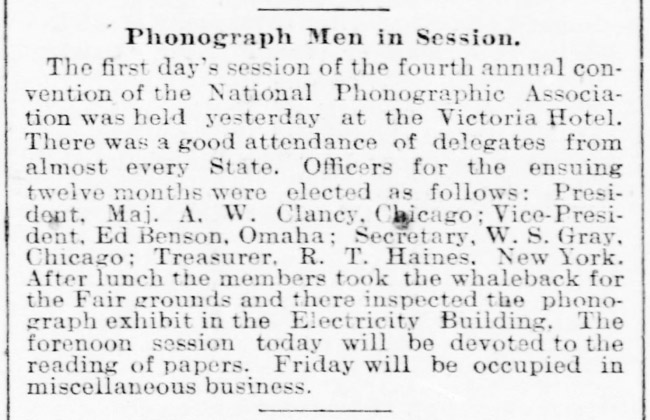
The Chicago Tribune, Chicago,
September 21, 1893, p.10
Samantha
in Europe by Josiah Allen's Wife
The Midway Plaisance

From a Bird's
eye view of the Midway Plaisance, Rand McNally and Company, 1893
(Courtesy Library of Congress)

"Official
guide to Midway Plaisance" by John J. Flinn, Chicago, 1893
(Library
of Congress)
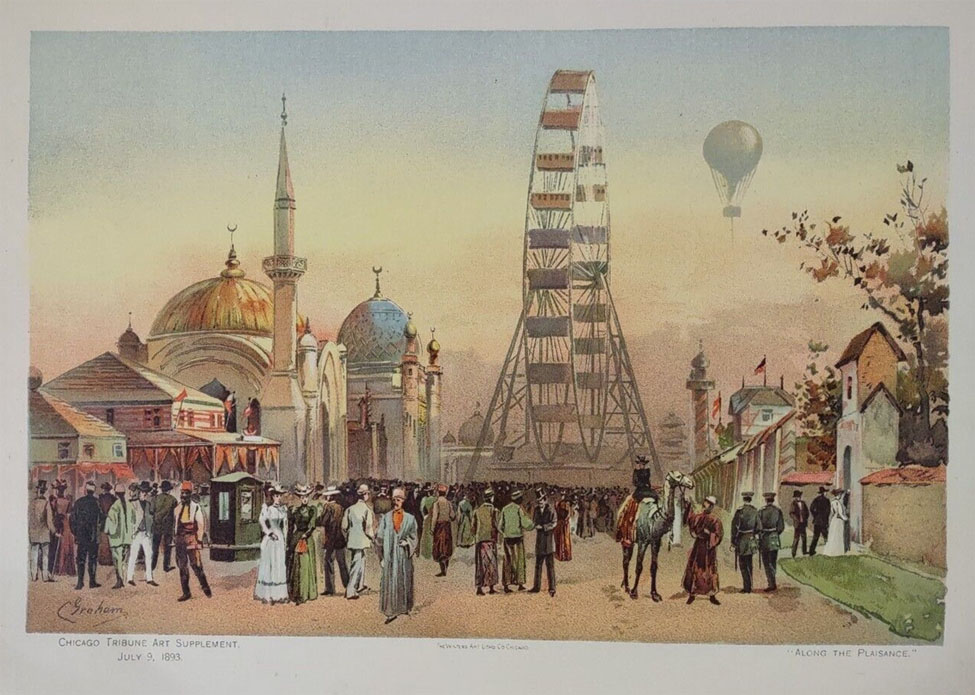
"Along the Plaisance," Chicago
Tribune Art Supplement, July 9, 1893
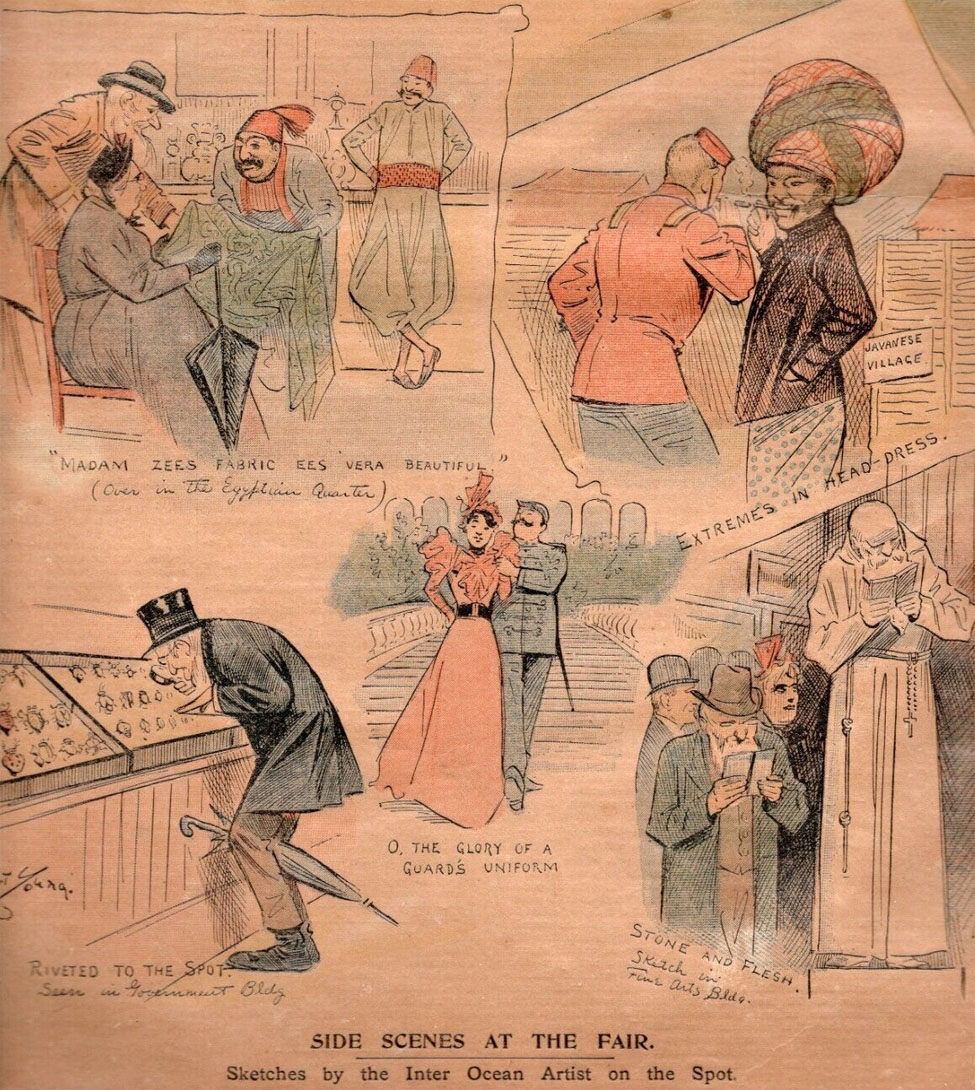
"SIDE SCENES AT
THE FAIR" by Arthur Young
Sketches by the Inter
Ocean Artist on the Spot.
The Daily Inter Ocean,
1893
The Bernese Alps Cyclorama
on the Midway Plaisance used a phonograph as part of its cycloramic
form "to make the deception complete, as one's ears are greeted
with the strains of a Swiss ballad seeming to proceed from the maid."
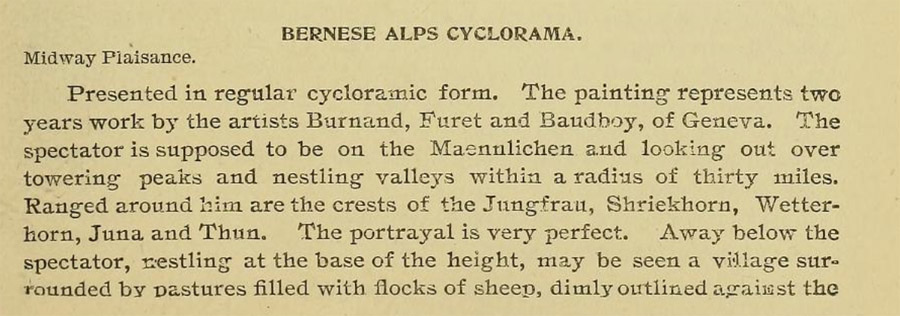
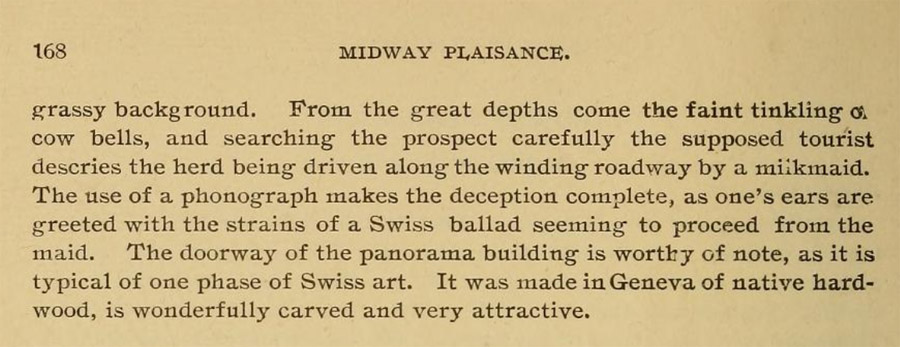
The Best Things To Be Seen At The
World's Fair
Published by Authority of the Exposition
Management, 1893
Bernese Alps Cyclorama,
Concessionaire: Benjamin Henneberg. Total Revenue $64,233; Revenue
for Fair $21,407 (Chicago's Grand Midway - A Walk Around the World
at the Columbian Exposition, Norman Bolotin with Christine Laing,
©2017 University of Illinois Press, (Appendix, Financial
Data on Midway Concessions.)
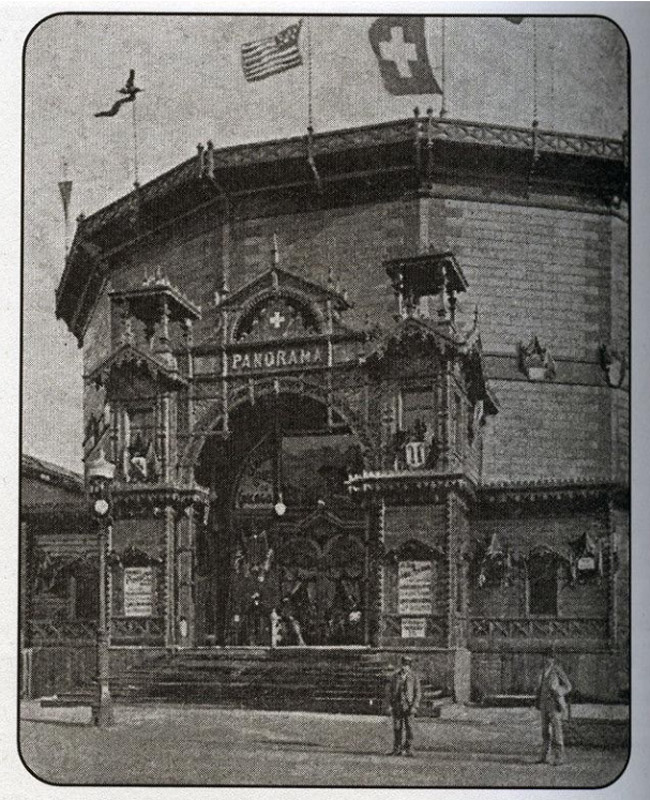
Switzerland's Bernese Alps Cyclorama
inside the Panorama Building with carved doorway. Admission was 50
Cents.

The Official Guide
of the World's Columbian Exhibition, p. 24
FACTOLA: The 1893 Bernese Alps
Cyclorama at the World's Columbian Exhibition in Chicago was the
first World's Fair "multi-media attraction" to use recorded
sound as part of its presentation with a milkmaid singing a Swiss
ballad. The Cyclorama on the Midway Plaisance used a phonograph
as part of its cycloramic form "to make the deception complete,
as one's ears are greeted with the strains of a Swiss ballad seeming
to proceed from the maid."
Another interesting attraction on
the Midway Plaisance was the "A Day in the Alps" exhibited
at The Electric Scenic Theatre. This attraction featured "wondrous
and picturesque features of wild Alpine scenery" by using electric
lights to create "atmospheric changes from dawn to twilight,
from rosy morning to the blackness of a stormy night..." Music
is performed with Tyrolean warblers" and an orchestra with
excellent musicians" -- no phonograph music, but said to be
a spectacular use of 250 electric incandescent lamps (unknown if
these were Edison or Westinghouse lights).
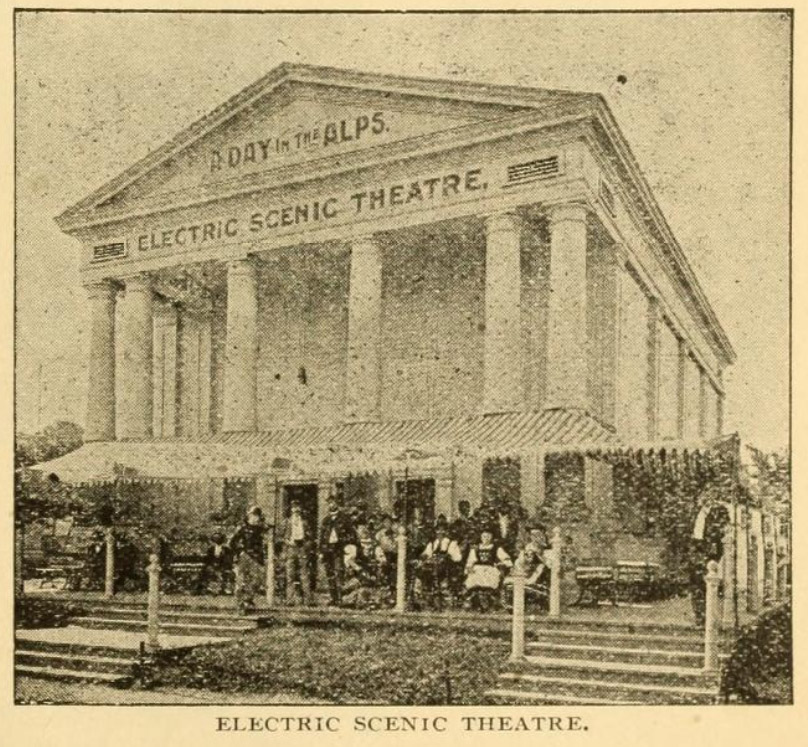
"The Official
Guide to the Midway Plaisance" p. 9 (Library
of Congress)

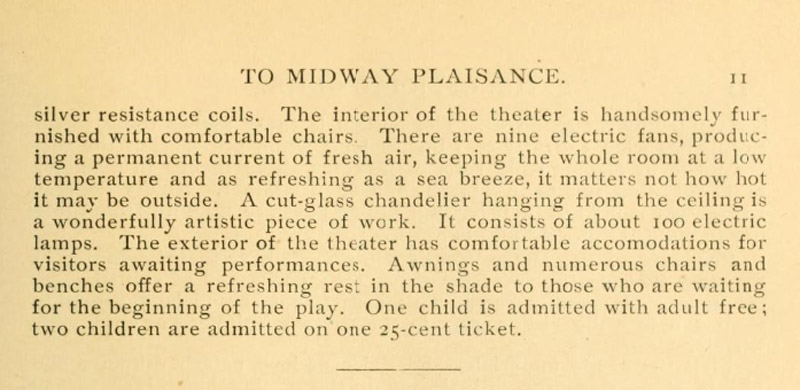
Ibid., p.11.
Phonographs on the Midway Plaisance
at the World's Fair - Disclaimer
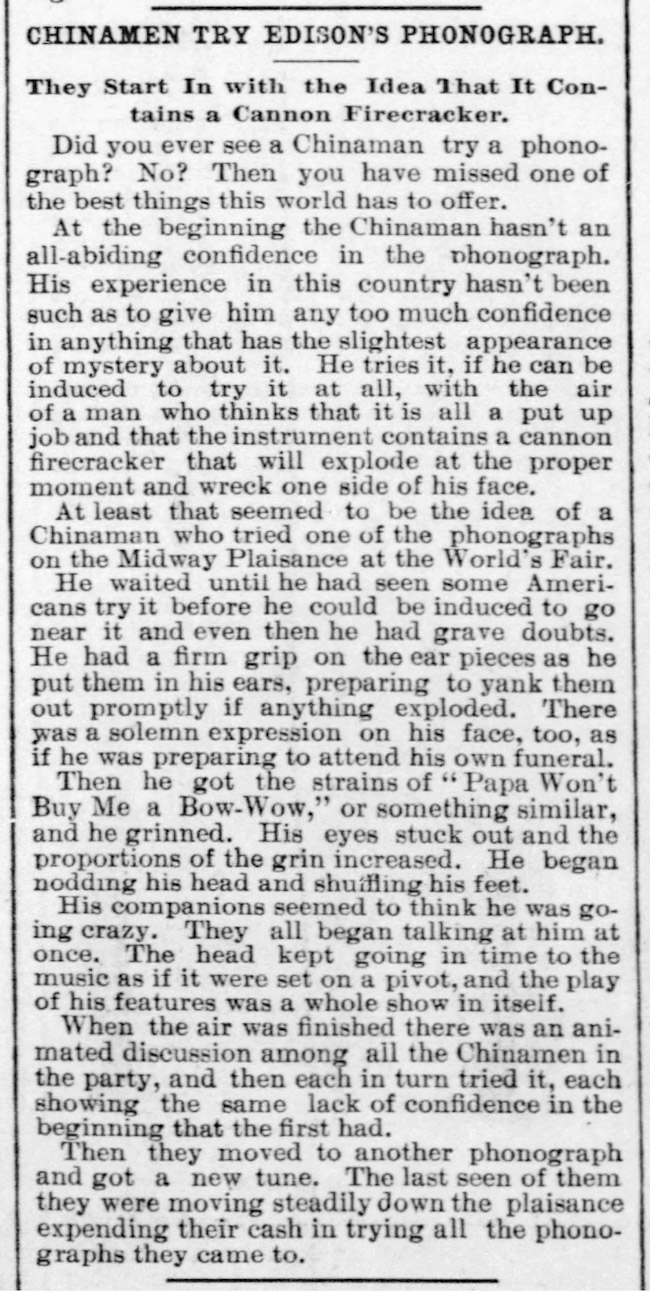
The Chicago Tribune, Chicago,
August 20, 1893, p.25
Pope Leo XIII sends
greetings using the Phonograph
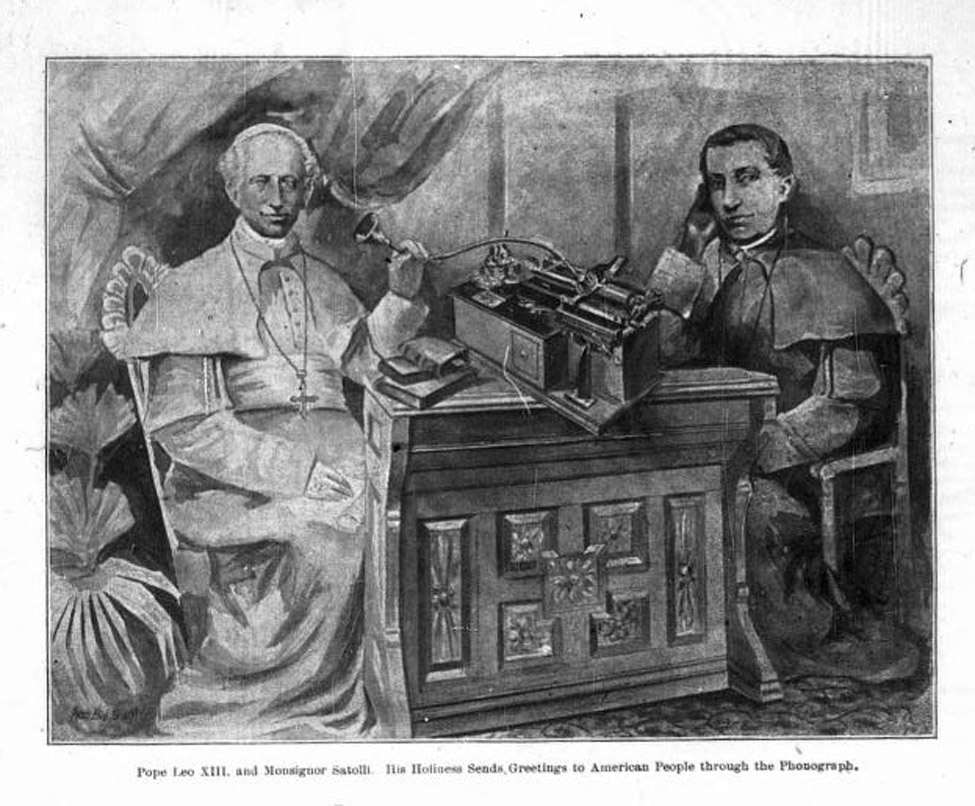
Pope Leo XIII sends
greetings for the opening of the World's Columbian Exposition.
The Phonogram,
March and April 1893
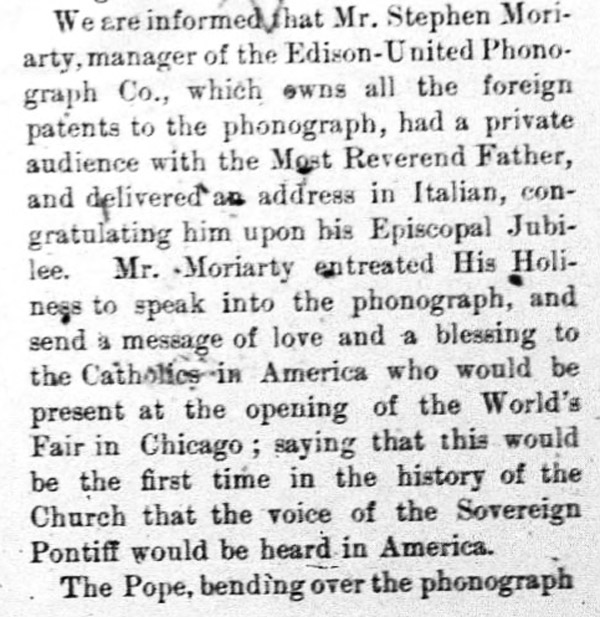
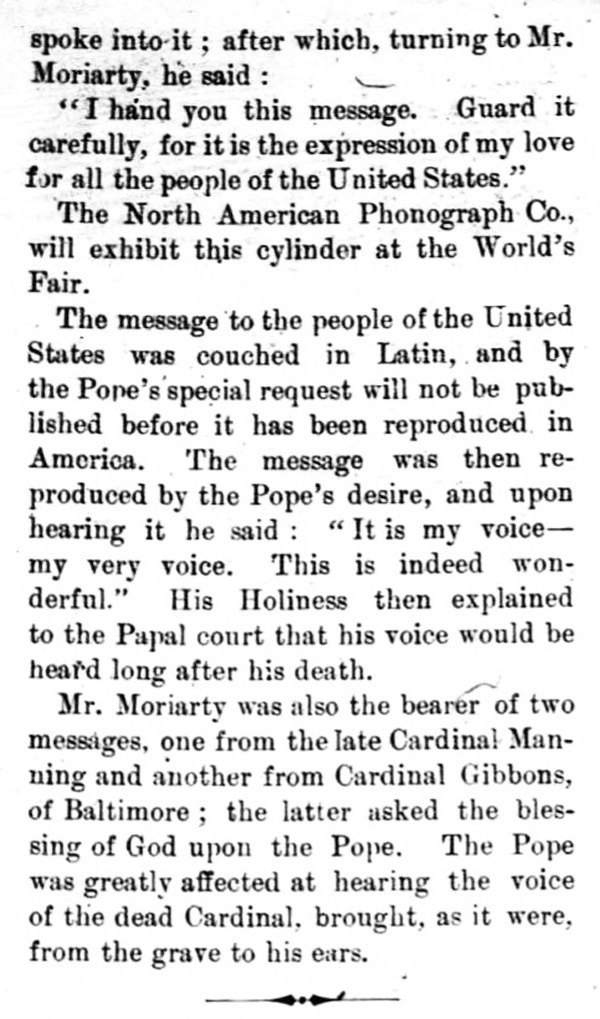
The Phonogram,
March and April 1893 pp. 351-352
The following is Scientific
American's May 20, 1893 article (with an engraving from the London
Graphic of the Pope's Phonographic Message to America.
First Public Exhibition
of the Kinetograph (but it was never at the World's Columbian Exposition
of 1893.)
The Kinetograph - A refinement
of Plateau's phenakistoscope and Muybridge's Zoopraxiscope
The first public exhibition of the
kinetograph included the lecture by Mr. George M. Hopkins who explained
how the kinetograph worked. "This apparatus is the refinement
of Plateau's phenakistoscope or the zootrope...In addition to Plateau's
experiments, I might refer to the work accomplished by Muybridge
and Anschuetz, who very successfully photographed animals in motion...But
these instruments, having but twenty-five or thirty pictures for
each subject...could not make the image appear like a continuous
photograph of moving things. In Mr. Edison's machine far more perfect
results are secured."
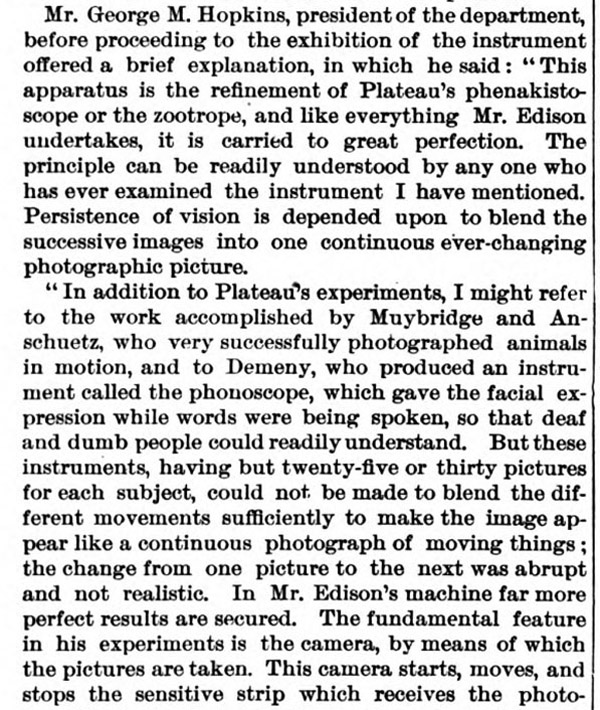
Muybridge's Zoopraxographical Hall
at the World's Columbian Exhibition
At the World's Columbian Exhibition
on the Midway Plaisance and "directly to the east of the
Streets of Cairo was the Zoopraxographical Hall. The building was
considered by many film historians to be the first commercial movie
theater. Eadweard Muybridge, an English photographer who was born
Edward James Muggeridge, used the hall to demonstrate his Zoopraxiscope.
Muybridge invented the Zoopraxiscope in 1879 and used it at the
many lectures he would give around the world. The Zoopraxiscope
combined photography, the Magic Lantern (projected still images)
and both the Zoetrope (spinning drums) and Phenakistiscope (spinning
discs)." (Text and video courtesy of Friends
of the White City)
Visit to see Compleat
Eadweard Muybridge: Chronology 1893-1904 (including references
to letters/communication with Edison)
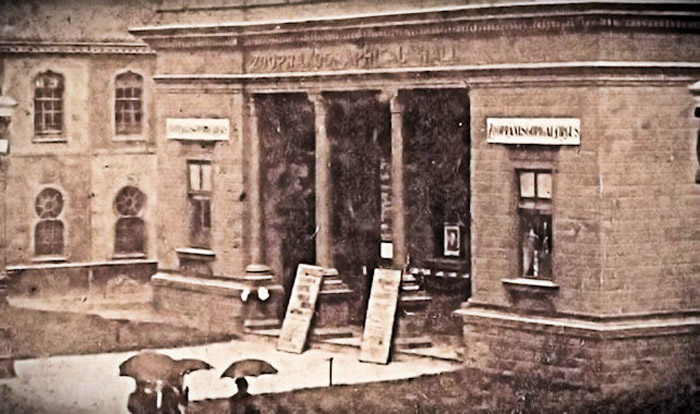
Zoopraxographical
Hall - Considered by many film historians to be the first
commercial movie theater
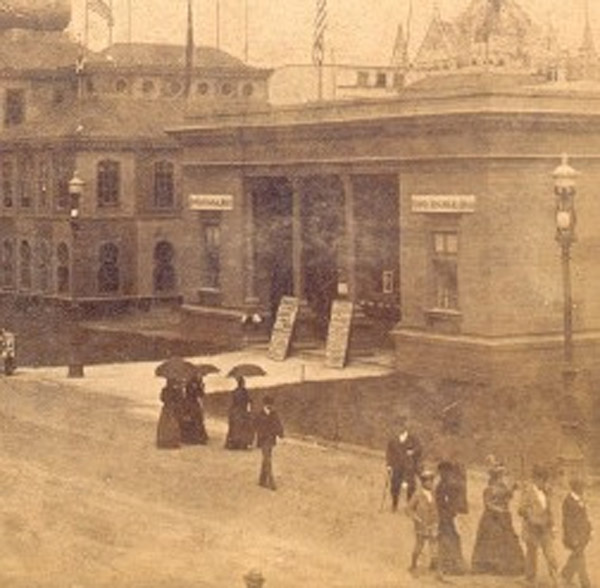
From
Stereoview card - Muybridge Display
Stereo view of the
Zoopraxigraphical Hall at the World's Fair in Chicago. Shows the
hall where Muybridge gave lectures and sold photographs.

Watch Muybridge's
Zoopraxoscope - Setting Time in Motion Video
A Chocolate Films Production
for Kingston Museum
Other Exhibits
at the Fair
Switzerland's exhibit in the Manufactures
and Liberal Arts Building displayed music boxes, but no phonographs.
"Shepp's World's
Fair Photographed, Being a Collection of Original Copyrighted
Photographs Authorized and Permitted by The Management of the World's
Columbian Exposition," Globe Bible Publishing Co., 1893 (Courtesy
Living
History Illinois)
(2) The Class M Phonograph, "primarily
for commercial use but would also have been in a few homes."
George L. Frow and Albert F. Sefl write the following:
"The electric phonographs
of these early years were being constantly modified according to
members of the trade, and pass through a somewhat "grey"
period from 1890 to 1892, until in 1893 two North American Phonograph
Company catalogues - this was an Edison concern - and The Phonogram
(U.K.), edited by J. Lewis Young, show the Edison electric phonographs
and also the water and treadle types, offered in different outfits
for both the home and the office. Initially its use had been limited
to commercial and business dictation, then the coin-slot trade began
to take an interest in it, but it was slow to come into the home,
the high cost being the chief reason.
Gone were the spectacle frames,
except for office use, in fact the 1893 catalogues of the North
American Company showed a handful of 'Residence Outfits' near-commercial
phonographs offered in elaborate cabinets, in reality heavily carved
and sophisticated forms of office desks. By 1895 Residence Outfits
had become "domestic Outfits', and the phonographs denoted
CLASS 'M' and CLASS 'E'.
"The Edison Cylinder Phonographs
- A Detailed Account of the Entertainment Models Until 1929"
by George L. Frow and Albert F. Sefl, published in Great Britain
by George L. Frow ©1978, p. 12
(3) "but many coin-in-the slot
machines are likely to be scattered through the premises."
The Phonogram, March-April, 1893 p. 355
|

